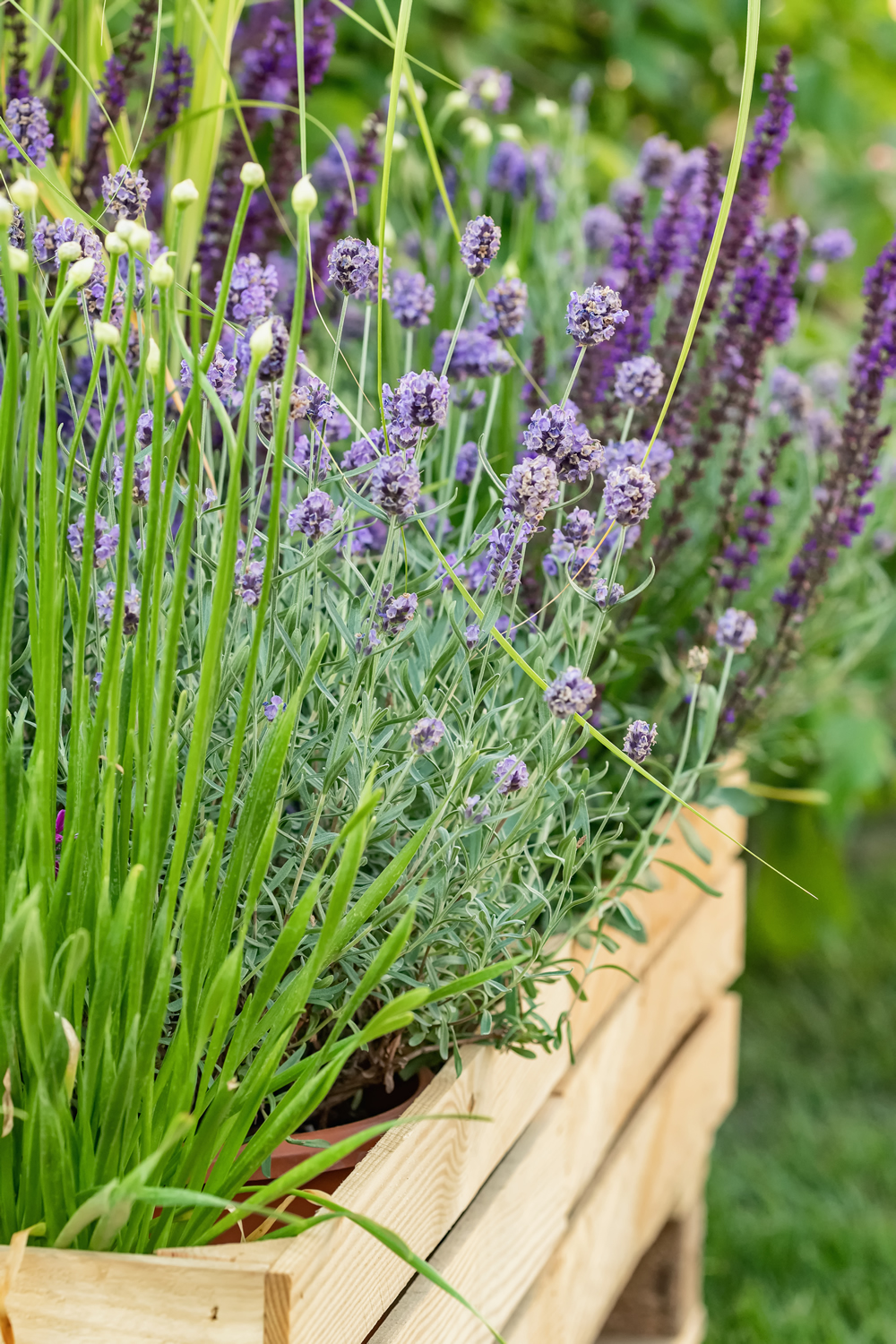
Lavender plants are reasonably easy to grow. They like sheltered positions to survive the winter, as they don’t like to be cold and wet.
Lavender plants prefer well drained soil in a sunny position and are ideal in containers or raised beds where they have a chance to dry out between waterings.
They are best planted in the spring and can be kept in shape by regular pruning, pruning is best to take place after flowering, but is also possible in spring as lavender flowers on this years growth. It is best to avoid cutting back into woody growth as the plant may not produce new growth from that. Softwood and semi-ripe cuttings can be taken during the summer and hardwood cuttings later in the year.
This is the best way to increase your stock if you are planning to grow enough for a low hedge.
Another feature of lavender that makes it popular in gardens, is the way it attracts insects like bees and hoverflies.
This is clearly good for the environment as well as interesting for us to watch too.
It maybe a little cold to plant lavender during the winter but if you are considering some lavender for your garden, it can be a good time to start planting seeds indoors, looking at the different varieties available and start planning for a spring planting.
Things To Do With Lavender
If you cut back your lavender after it has flowered and collect the cuttings, you can use the dried flowers. They can tied into posies or the tiny flowers can be removed from the stem and made into lavender bags by placing some in the centre of a small square piece of cloth. The corners are then lifted and a cord tied around to keep it in place.
The flowers can also be used to flavour cakes, biscuits and drinks, but best of all lavender plants are bee friendly – happy planting.